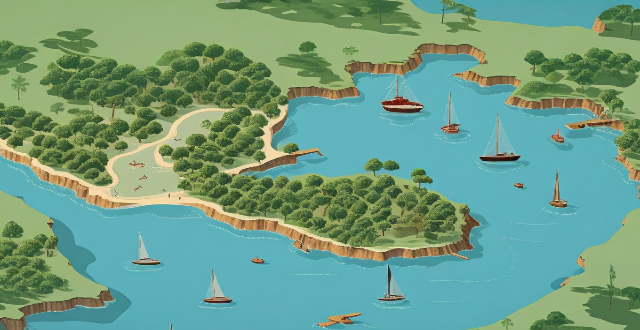Small island nations are uniquely susceptible to climate change due to their geographical, environmental, and socio-economic traits. Limited land area and low elevation make them prone to inundation and flooding. Coral reef degradation and biodiversity threats further exacerbate these vulnerabilities. Economically, the tourism industry and fisheries are at risk, while human displacement and migration become pressing issues. Adaptation and resilience challenges include limited resources and a heavy reliance on international support. Addressing these challenges requires global cooperation and targeted strategies.

How are Small Island Nations Particularly Vulnerable to the Effects of Climate Change?
Small island nations are disproportionately vulnerable to the effects of climate change due to their unique geographical, environmental, and socio-economic characteristics. Here's a detailed breakdown:
Geographical Characteristics
*Limited Land Area*
- Elevated Risk of Inundation: With rising sea levels, even a small increase can significantly reduce the habitable land area.
- Loss of Terrestrial Habitats: Wetlands, forests, and other ecosystems face destruction as seawater encroaches inland.
*Low Elevation*
- Increased Flooding Risks: Even slight sea-level rises can cause widespread flooding in low-lying areas.
- Saltwater Intrusion: Freshwater resources are at risk due to saltwater encroachment into aquifers and waterways.
Environmental Sensitivities
*Coral Reef Degradation*
- Loss of Natural Barriers: Coral reefs protect shorelines from wave action and storm surges. Their degradation leaves islands more exposed.
- Ecosystem Services Decline: Coral reefs provide food, tourism revenue, and coastal protection, all of which diminish with reef health decline.
*Biodiversity Threats*
- Endemic Species at Risk: Many small islands host unique species found nowhere else, making them especially vulnerable to extinction.
- Habitat Loss: As habitats shrink or change due to rising temperatures and sea levels, biodiversity suffers.
Socio-Economic Challenges
*Economic Impacts*
- Tourism at Risk: Beach erosion and damage to coral reefs can harm the tourism industry, a major income source for many islands.
- Disruption of Fisheries: Changes in ocean temperatures and acidity affect fish populations, impacting fishing communities.
*Human Displacement and Migration*
- Forced Migration: Rising sea levels and extreme weather events may render some islands uninhabitable, leading to migration and refugee crises.
- Internal Displacement: Even within islands, people may be forced to move from coastal to more inland areas, causing population shifts and pressure on resources.
Adaptation and Resilience Challenges
*Limited Resources*
- Financial Constraints: Small island nations often lack the financial resources to implement large-scale adaptation measures.
- Infrastructure Challenges: Building resilient infrastructure is costly and complex, particularly for smaller economies.
*Dependency on International Support*
- Need for Foreign Aid: These nations rely heavily on international support for adaptation and mitigation efforts.
- Bargaining Power: Small island nations often have limited bargaining power in international negotiations, making it harder to secure necessary funding and commitments.
In conclusion, small island nations face a complex web of challenges stemming from their unique characteristics, making them particularly vulnerable to the effects of climate change. Addressing these vulnerabilities requires global cooperation, targeted adaptation strategies, and significant investments in resilience-building initiatives.